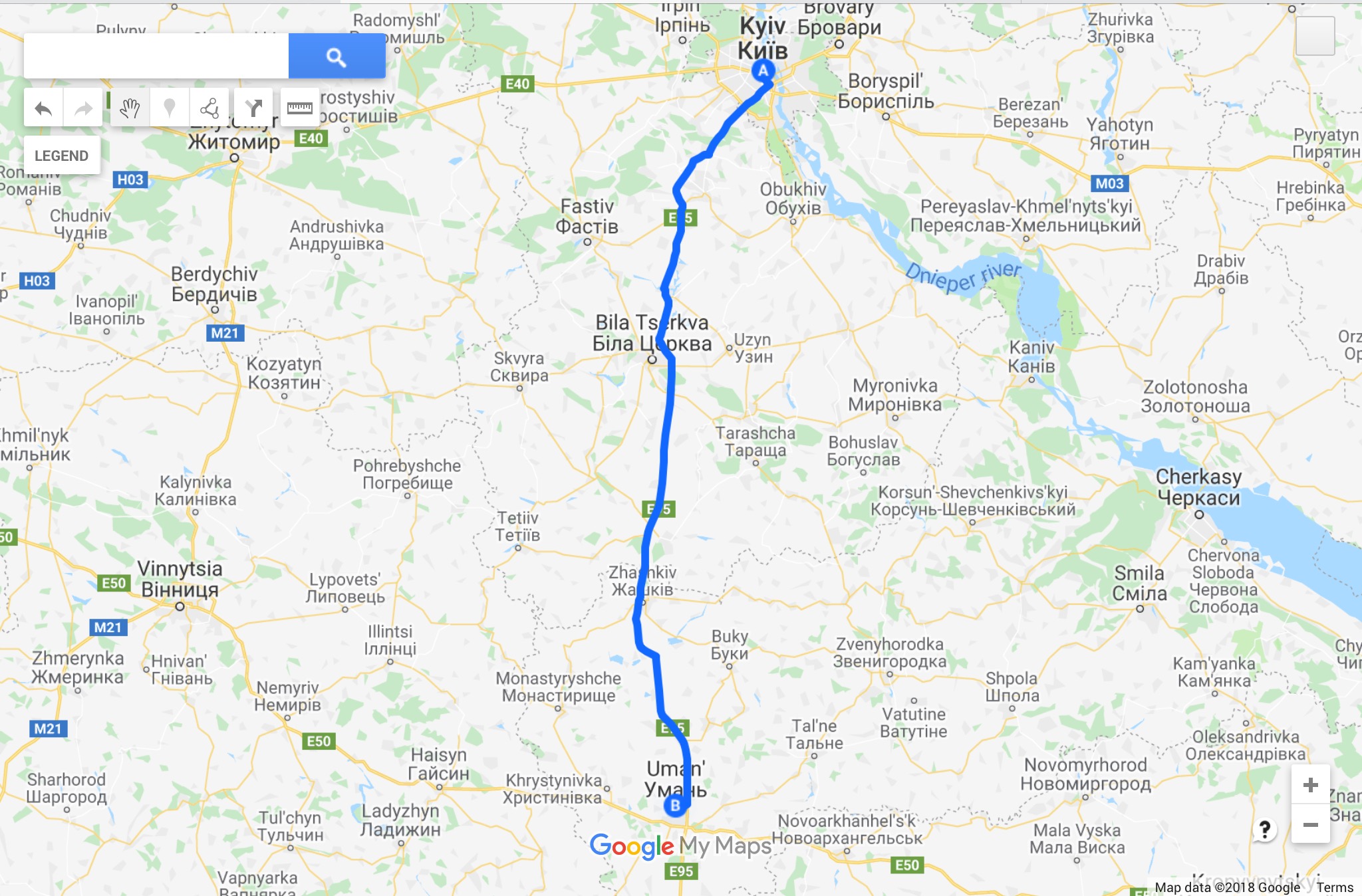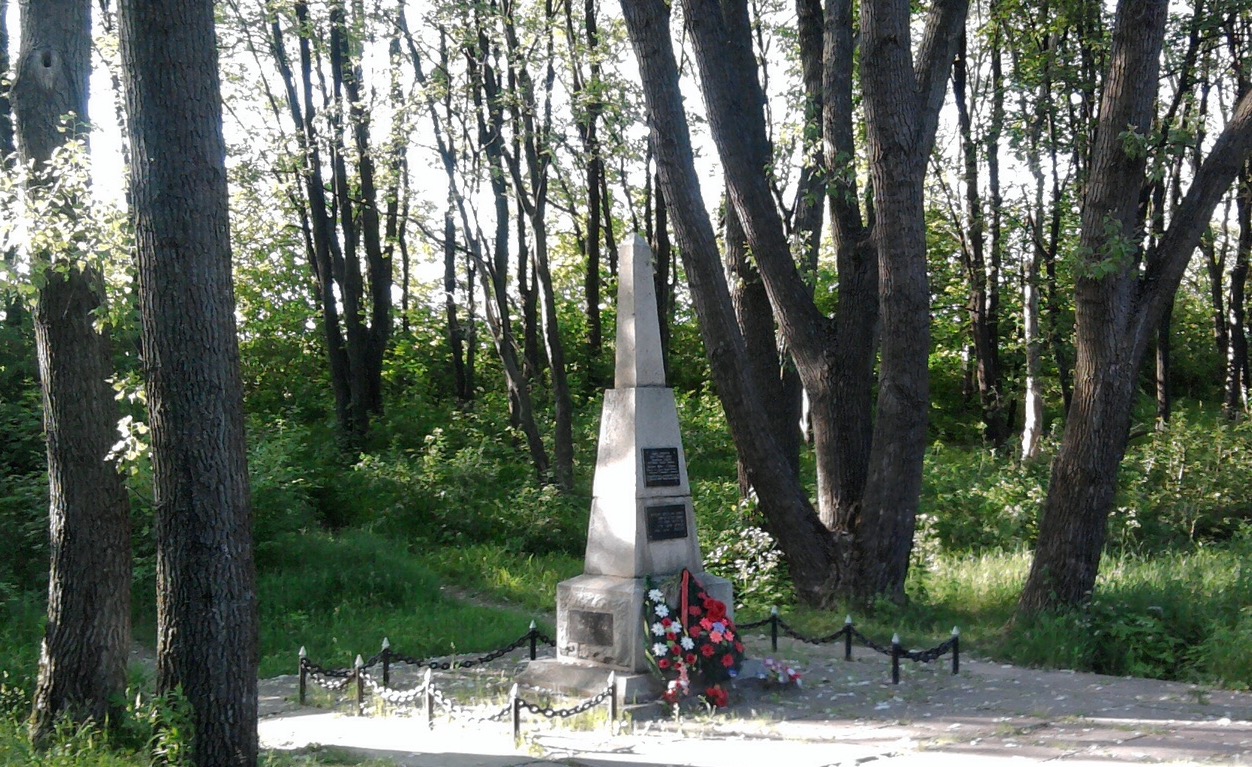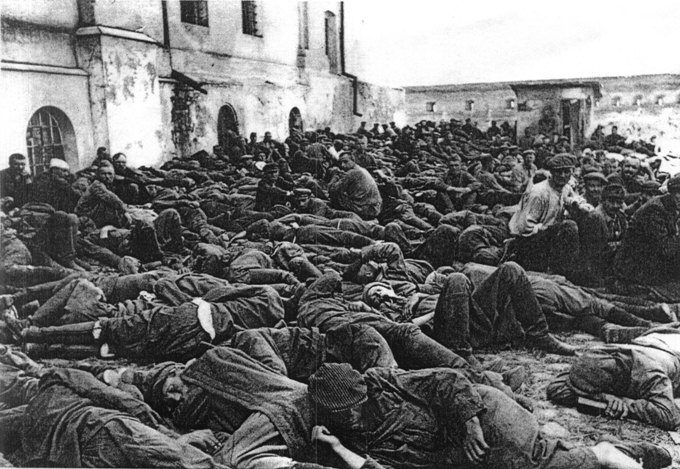The route from Kyiv to Uman' by car, 210 km:
In 1900 about 68% of the population of Uman were Jews. In the city were 4 Orthodox churches, Catholic church, 3 synagogues, 13 Jewish prayer houses, 4 private Jewish schools, theater.
Uman population:
1926: Jews - 49,5%, Ukrainians - 43,3%, Russians - 4,6%;
1959: Jews - 5%, Ukrainians - 76,5%, Russians - 16%
Grave of Rabbi Nachman of Breslov
on former old destroyed Jewish cemetery.
Rabbi Nachman of Breslov (Hebrew: נחמן מברסלב), also known as Reb Nachman of Bratslav, Reb Nachman Breslover (Yiddish: רבי נחמן ברעסלאווער), Nachman from Uman (1772 – 1810), was the founder of the Breslov Hasidic movement. He was a great-grandson of the Baal Shem Tov, who founded the Hasidism in 17th century (see Medzhybizh Jewish Tour...)
The grave of Rabbi Nachman in Uman immediately became a place of pilgrimage for the Braslav Hasidim, especially during the main Jewish holidays, particularly on Rosh Hashanah. This tradition persisted until the mid-1920s, and was revived in the late 1980s. Annually 20-25 thousand pilgrims visit the grave on the Rosh Hashanah holiday.
https://en.m.wikipedia.org/wiki/Nachman_of_Breslov
Place where during WWII captive camp "Uman Pit" was existing.
In summer of 1941 Nazi organized a camp "Shtalag-349", one of the first captive camps on the territory of Ukraine. 50 000 - 70 000 war prisoners and civilians of Uman were kept in inhuman conditions at the bottom of the clay quarry of a brick factory. thousands of them died from wounds, disease and hunger, thousands were shot. Umanskaya pit existed until 1943 until the end of the occupation. The monument is erected on a mass grave.
https://04744.info/istoriya-umani/item/625-umanska-yama
Monument to Uman Jews in the tract "Sukhyi Yar" (dry ravine)
where at the time of Nazi occupation (1941-1943) were shot dead more than 20 thousand Jews not only from the city of Uman, but also from other settlements of the Uman district.
Monument to Jewish children killed by the Nazis in 1942,
was opened in Uman in May, 2017. The memorial was located near the mass grave in which about a thousand children's remains were buried.
In April 1942, the Nazis ordered the head of the ghetto, Haim Schwartz, to hand over a thousand children from three to ten years old to send them to an orphanage. Schwartz refused to carry out the order, so the Nazis and their accomplices came for the children themselves on April, 22nd. Those who could not tear themselves away from their parents were taken away with their family. Then the whole group was shot in the near forest, and the bodies were buried in a previously prepared pit.
Memorial In the tract "Tovsta Dubyna" of Uman
was opened on May 9, 2007 on the place, where 376 Jews were shot in February, 1942.
Jewish Ghetto during a WWII
During the Second World War, Uman was occupied by German troops for two and a half years. The consequences of occupation were catastrophic for the Jews. Since August 1941, living in the Uman Jews was allowed only in a separate district of the city (bazaar with the adjoining territory), which was called "ghetto". The Jews were forced to wear yellow patches on their chest and back. All the horror of that existence was amplified by the fact that the inhabitants of the ghetto did not give food. Therefore, people were doomed to painful starvation. At first, they changed food for everything that could be exchanged for people who came to the fence. But over time, there was nothing to change.
Former Hasidim Synagogue
At the turn of the 18th and 19th centuries a new Great Choral Synagogue was built. At present, the building of this synagogue is used as the production building of the Megommetr plant.
Ukaine - Uman Jewish Tour Privaye Guides





